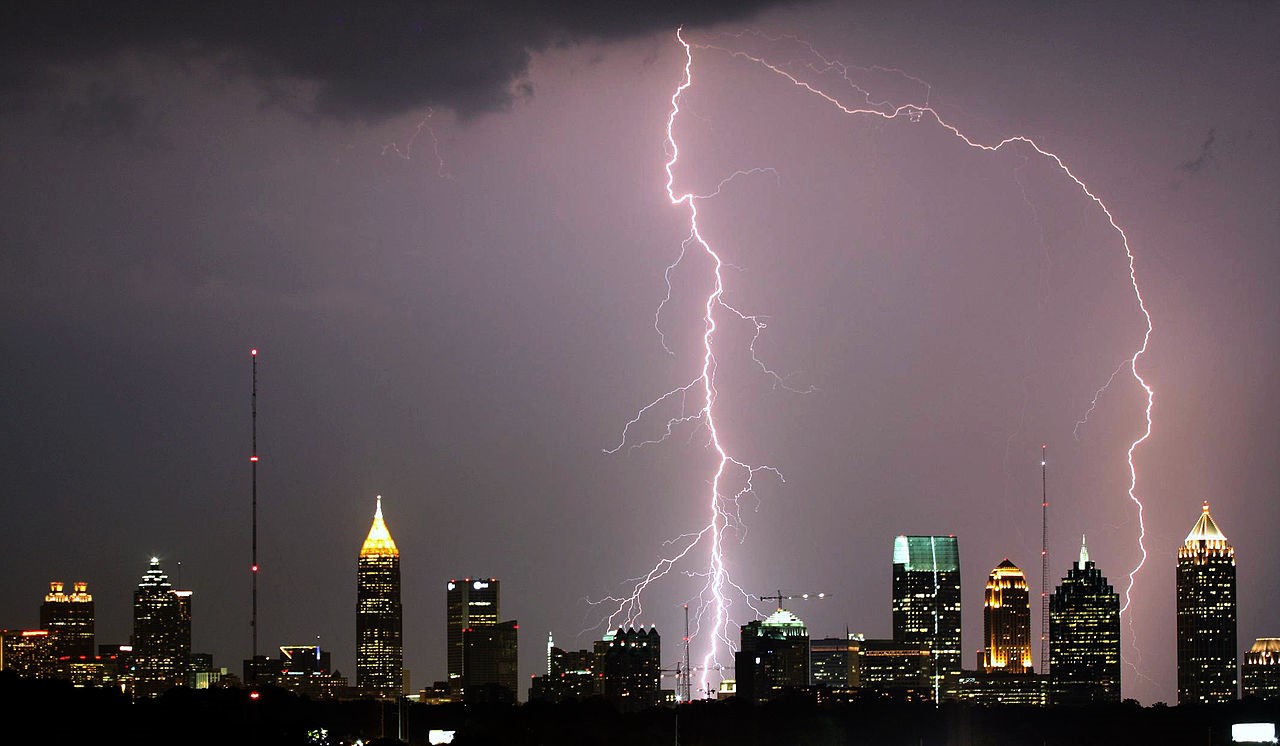Cities Birth More Thunderstorms Than Rural Areas

Hate thunderstorms? Atlanta may not be for you, as scientists recently found such hot-and-humid metros in the Southeast can birth more summer thunderstorms than rural areas.
In the study, researchers marked the location of every thunderstorm born in northern Georgia and northeastern Alabama during a 17-year period. There were nearly 26,000 thunderstorms detected between 1997 and 2013. The region the city of Atlanta, as well as country hayfields and pastures.
The was a 5 percent greater chance that thunderstorms would pop up over Atlanta compared with the city's surrounding rural areas, the researchers found.
"Per year, that amounts to two or three more thunderstorms of the pop-up variety," lead study author Alex Haberlie, a graduate student at Northern Illinois University (NIU), said in a statement. Pop-up thunderstorms can appear separately from larger storm systems and are more difficult to forecast, Haberlie said.
The storm risk was greatest for urban and suburban Atlanta in the late afternoon and early evening during July and August, according to the study, published Jan. 7 in the Quarterly Journal of the Royal Meteorological Society.
"This study presents the first evidence that urban areas birth or initiate thunderstorms more often than the surrounding rural areas on a climatological timescale," study co-author Walker Ashley, an NIU meteorology professor, said in the statement.
The findings would likely hold up in similar hot-and-humid Southern cities, such as Nashville, Tennessee, and Birmingham, Alabama, Haberlie said. For example, earlier studies have documented that many large cities experienced heavier rainfall than surrounding rural areas. But there are several ways that local factors could control weather patterns over metropolitan areas, the researchers said. Here are some examples:
Sign up for the Live Science daily newsletter now
Get the world’s most fascinating discoveries delivered straight to your inbox.
Pollution: Thunderstorm births were significantly higher on weekdays than on weekend days, the study researchers reported. This suggests higher pollution levels within the city may play a role. (Rural areas showed no significant weekday-weekend differences.)
The heat island effect: The concrete jungle produces heat, often making cities 2 to 5 degrees Fahrenheit (1 to 3 degrees Celsius) hotter than the surrounding countryside. This extra heat means low pressure can form atop urban areas, with higher pressure in rural areas, sparking convection that can trigger thunderstorms.
Tall buildings: Tall buildings may enhance the upward convection that leads to thunderstorms.
Wind direction: More thunderstorms were born downwind of Atlanta, suggesting the prevailing wind direction influenced the location of the storms.
Follow Becky Oskin @beckyoskin. Follow Live Science @livescience, Facebook & Google+. Originally published on Live Science.










